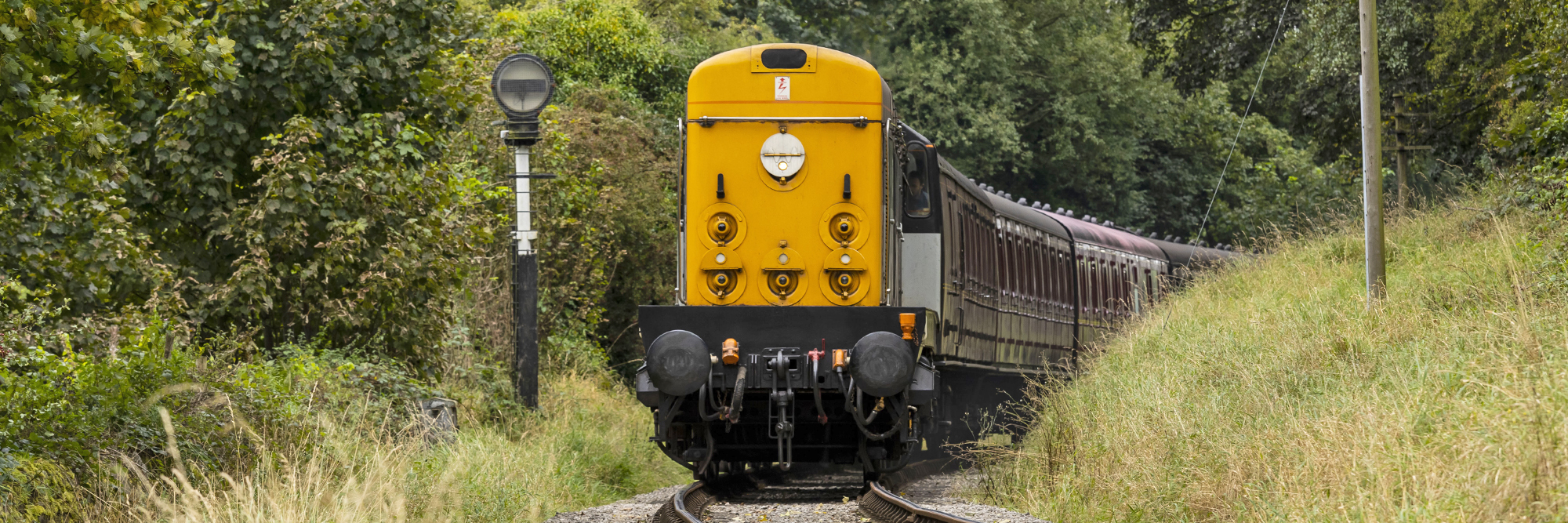A long lived reliable class of first generation diesels
228 Type 1 diesel electric diesel locomotives were produced, introduced in 1957, examples of the class, 63 years after first manufacture, can still be seen across the network, usually working as pairs
An ideal locomotive when a diesel’s required diesel
It is testimony to the build qualities of these diesel electric locomotives that they have become extremely popular as stand-by motive power on preserved lines, either for failed steam engines or on engineer trains for line and structure maintenance.
Data File
Built: 1959, Darlington
Engine: English Electric 8SVT (8 cylinder ‘V’) 1,000hp
Transmission: English Electric 526/D Nose suspended axle-hung traction motors.
Power at Rail: 770 hp at 11 mph
Weighc 71 tons 19 cwt
Max. T.E.: 42,200 lbf
Cont. T.E.: 25,000 lbf at 11 mph. Max Speed: 75 mph
Numbers carried during working career: D8031, 20 031
A wanderer from the far north of Scotland to the East Midlands
The engine was completed in late 1959 at the English Electric works in Darlington and entered British Railways service in January 1960, numbered D8031. The engine went to work in Scotland being based at Kittybrewster Depot. It was fitted at first with a tablet catcher, on the left hand side of the cab, for working over single-line sections. The engine subsequently spent time at three other sheds in Scotland – lnverness, Polmadie (Glasgow) and Haymarket (Edinburgh) – before being transferred, for the rest of its career, to England in June 1968.
The engine spent time at several sheds in England; Nottingham, Stratford (London), York, Gateshead, lmmingham, Tinsley (Sheffield), lmmingham and Toton. During this time, under the new TOPS classification system, no. D8031 was re-numbered 20 031 in January 1974, the class now known as Class 20 rather than Type 1. During the 1980s, Class 20’s started to be coupled into pairs (nose to nose) for reasons of safety, as it improved visibility by having a driving cab at each end.
20 031 first came out of service at Toton Depot in September 1989 only to be returned to traffic in November 1989 before being finally withdrawn in 1990.
31 years on the national network and 30 on the KWVR (2020)
The engine was purchased by a private consortium of KWVR members for use on the Worth Valley branch and the engine arrived at Haworth in August 1992. However, before arrival at Haworth the engine returned to Scotland to M.C. Metals in Glasgow for the removal of asbestos.
The engine has found useful employment on early morning passenger services on the KWVR and on works-train duties for the Civil Department. It also hauls the occasional demonstration freight during either photo charters or special events like the annual Diesel Gala weekend and has been a regular at the north (downhill) end of the top and tailed Santa Steam Specials.
